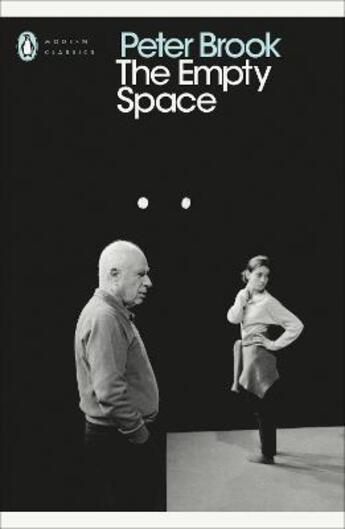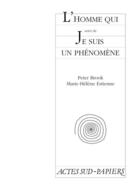-
Date de parution : 31/01/2008
-
Editeur :
Penguin Uk
-
EAN : 9780141189222
-
Série :
(-)
-
Support :
Papier
Résumé:
Adapted from a series of four lectures, originally delivered as the first of the Granada Northern Lectures Peter Brook's The Empty Space is an exploration of four aspects of theatre, 'Deadly, Holy, Rough and Immediate', published in Penguin Modern Classics. 'I can take any empty space and... Voir plus
Adapted from a series of four lectures, originally delivered as the first of the Granada Northern Lectures Peter Brook's The Empty Space is an exploration of four aspects of theatre, 'Deadly, Holy, Rough and Immediate', published in Penguin Modern Classics. 'I can take any empty space and call it a bare stage' In The Empty Space , groundbreaking director Peter Brook draws on a life in love with the stage to explore the issues facing any theatrical performance. Here he describes important developments in theatre from the last century, as well as smaller scale events, from productions by Stanislavsky to the rise of Method Acting, from Brecht's revolutionary alienation technique to the free form Happenings of the 1960s, and from the different styles of such great Shakespearean actors as John Gielgud and Paul Scofield to a joyous impromptu performance in the burnt-out shell of the Hamburg Opera just after the war. Passionate, unconventional and fascinating, his book shows how theatre defies rules, builds and shatters illusions and creates lasting memories for its audiences. Peter Stephen Paul Brook CH CBE (b. 1925) is a highly influential British theatrical producer and director. During the 1950s he worked on many productions in Britain, Europe, and the USA, and in 1962 returned to Stratford-upon-Avon to join the newly established Royal Shakespeare Company. Throughout the next the 1960's he directed many ground breaking productions for the RSC before in 1970 forming The International Centre for Theatre Research in Paris. If you enjoyed The Empty Space , you might like John Berger's Ways of Seeing , also available in Penguin Modern Classics. 'A brilliant book ... should be read by the many besides the passionate few to whom it will be required reading' Daily Telegraph
Donner votre avis
















